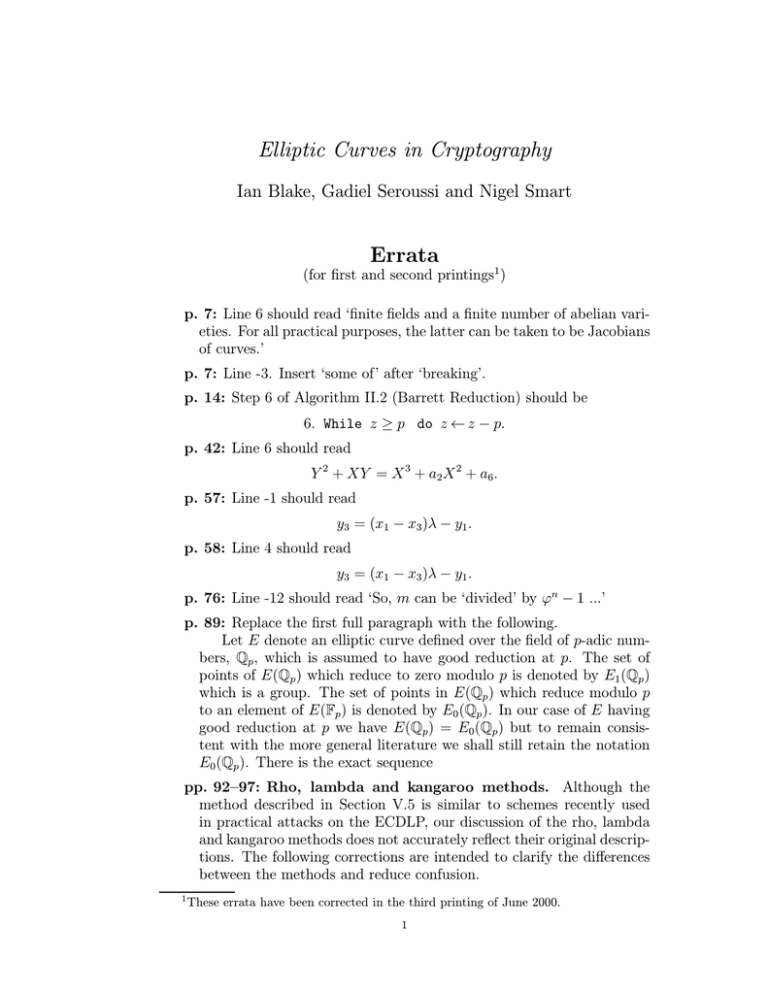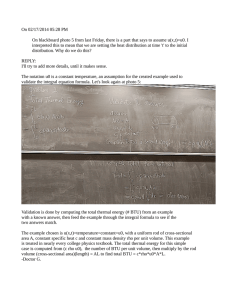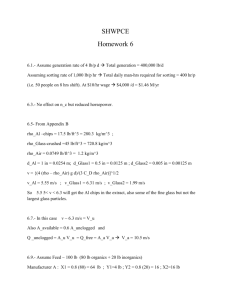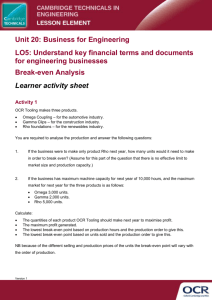Elliptic Curves in Cryptography Errata Ian Blake, Gadiel Seroussi and Nigel Smart
advertisement

Elliptic Curves in Cryptography
Ian Blake, Gadiel Seroussi and Nigel Smart
Errata
(for ¯rst and second printings1 )
p. 7: Line 6 should read `¯nite ¯elds and a ¯nite number of abelian varieties. For all practical purposes, the latter can be taken to be Jacobians
of curves.'
p. 7: Line -3. Insert `some of' after `breaking'.
p. 14: Step 6 of Algorithm II.2 (Barrett Reduction) should be
6: While z ¸ p do z à z ¡ p:
p. 42: Line 6 should read
Y 2 + XY = X 3 + a2 X 2 + a6 :
p. 57: Line -1 should read
y3 = (x1 ¡ x3 )¸ ¡ y1 :
p. 58: Line 4 should read
y3 = (x1 ¡ x3 )¸ ¡ y1 :
p. 76: Line -12 should read `So, m can be `divided' by 'n ¡ 1 ...'
p. 89: Replace the ¯rst full paragraph with the following.
Let E denote an elliptic curve de¯ned over the ¯eld of p-adic numbers, Qp , which is assumed to have good reduction at p. The set of
points of E(Qp ) which reduce to zero modulo p is denoted by E1 (Qp )
which is a group. The set of points in E(Qp ) which reduce modulo p
to an element of E(Fp ) is denoted by E0 (Qp ). In our case of E having
good reduction at p we have E(Qp ) = E0 (Qp ) but to remain consistent with the more general literature we shall still retain the notation
E0 (Qp ). There is the exact sequence
pp. 92{97: Rho, lambda and kangaroo methods. Although the
method described in Section V.5 is similar to schemes recently used
in practical attacks on the ECDLP, our discussion of the rho, lambda
and kangaroo methods does not accurately re°ect their original descriptions. The following corrections are intended to clarify the di®erences
between the methods and reduce confusion.
1
These errata have been corrected in the third printing of June 2000.
1
2
elliptic curves in cryptography
p. 92: Replace the paragraph before the start of the example with the
following.
The rho and lambda methods, discussed
in more detail in the next
p
subsection, also have complexity O( n). The time to sort and search
the look-up table in the BSGS method can be eliminated p
if a hash
table is used instead. In this case, the constant multiplying n in the
asymptotic estimate can be made 43 . Pollard's rho method has a slightly
better constant, roughly 54 . However, this is only an expected running
time, given the randomized nature of the method. The lambda method,
on the other hand, has a constant of 2, again applied to expected
running time. The advantage of the rho and lambda methods is that
their storage requirements can be made arbitrarily small.
p. 93: Section V.5. Change the title to `Methods based on Random
Walks'.
Replace the ¯rst two paragraphs of the section with the following.
Pollard [125] gives a number of methods to solve the discrete logarithm problem in a variety of groups. The rho method uses a single
random walk and waits for a cycle to occur. By using a space-e±cient
method to detect the cycle, the discrete logarithm can be found. The
wait for the cycle means that the single random walk can be thought
of as tracing out the greek letter rho, ½.
In Pollard's lambda method (often called the method of tame and
wild kangaroos), two random walks are used, one by a tame kangaroo
who jumps o® into the wild, digs a hole and waits for the wild kangaroo
to fall into it. The two paths form the shape of the greek letter lambda,
¸. The lambda method is suited to ¯nding discrete logarithms which
are known to lie in a short interval.
There is a parallel version of the rho method, which uses many
random walks. However, despite the method's name, the `paths' do not
now look like a rho, since instead one looks for two paths that intersect.
The method described in this section is what is usually referred to as
the parallel rho method.
The following intuitive explanation uses the analogy of jumping
animals, since we have found this to be useful when explaining the
method in lectures. However, these are not the kangaroos of Pollard's
method, since Pollard's kangaroos perform better controlled jumps. We
shall call our jumping animals `snarks', since they jump around in a
rather uncontrolled manner.
p. 94: First paragraph should be replaced with the following.
To simplify the matter we take two snarks. Eventually we shall
use a larger number of snarks. The two snarks are given a spade and
told that they should dig a hole every ten or so jumps. Where each
snark jumps next depends on the position they are currently at, hence
errata
3
when one snark meets the path of the other (or itself) it will follow the
original path along until it falls into one of the holes that have been
dug.
pp. 94{96: Replace `kangaroo' with `snark' throughout. Remove references to `tame' and `wild' snarks, since all snarks are `wild'.
p. 95: Line 17. Remove `, which gives the method one of its names.'
p. 97: Line -17. Remove the word `small'.
p. 98: Line -6 should read `the other supersingular curves.'
p. 104: Line -7. Replace `can be signi¯cantly diminished' with `can be
made arbitrarily small.'
p. 112: Line -5 (of the main text). The inequality should be an equality.
p. 114: Footnote. Insert comma after `comments'.
p. 171: Line -11. The sum should run over P 2 C(Fq ).
p. 176: Line 10. Remove `, what is no surprise,'.
p. 193: In reference [37], the author is R. Crandall.
pp. 191{198: The following references have now appeared.
[89] JLMS, Vol 59, pp 448-460, 1999.
[118] Math. Comp., Vol 68, pp 1233-1241, 1999.
[152] J. Cryptology, Vol 12, pp 141-151, 1999.
[153] J. Cryptology, Vol 12, pp 193-196, 1999.


